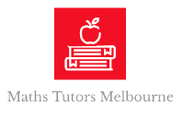|
According to Galileo Galilei, mathematics is the language in which God has written the universe. This is relatively true since we cannot read or learn anything in this world or the universe itself without learning the letter, shape and other geometrical elements of maths.
Mathematics is also considered the language of science since it wouldn’t be possible to arrive at a conclusion or solve an intricate problem without it. However, is maths really a language? To answer this question, we need to delve deeper into how the grammar and vocabulary of mathematics are used to construct various sentences. What exactly is a language? Language has several definitions, but we all understand that it is essential since it is a system composed of symbols and sounds used in communication. According to the linguist, Noam Chomsky, language is a set of constructed sentences utilising a set of elements that represent events and abstract concepts. No matter which definition is used, a language will contain the following components:
All these components are present in mathematics since it uses syntax, grammar, and the symbols have meaning, and it is the same throughout the world. Therefore, scientists and mathematicians use maths to communicate concepts and real-world phenomena. What is syntax, vocabulary, and grammar in Mathematics? Maths employs various alphabets and symbols that are unique. These elements come together as a mathematical equation. So, it will always contain words that form a sentence. For example: 3+5 = 8 Which can be converted to words as “three plus five equals eight.” Nouns will include the following:
Verbs in math will include symbols like:
Universal rules No matter what country you belong to, maths will be interpreted using the same universal structure. Therefore, formulas will always be read from left to right, and brackets will indicate the order in which the elements interact. Greek and Latin alphabets are commonly used for variables and parameters. Real numbers will use the following symbols: β, a, b, c, and γ. At the same time, integers will be presented by j, k, I, l, m, n. Lastly, unknowns are presented by y, x, z, and complex numbers will be translated using z and w. Mathematical language as a teaching tool It is essential to understand how mathematical sentences work together and it will also be helpful when you’re learning or teaching math. Most people are intimidated with symbols and numbers, so by converting equations into a familiar and easy to understand language – math will be a more approachable subject. It’s like translating an unknown or foreign language into something students understand. Students typically dislike extracting verbs, nouns, and modifiers from written or spoken language, but it is a valuable skill to have since it can improve problem-solving skills and increase your mathematical comprehension. Most importantly, since maths is the same in all countries in the world, it’s just right to say that it can be used as a universal language. For this reason, math can be an effective tool for learning and communication because it can break the barriers that exist. Overall, students learn mathematics using a robust vocabulary that includes symbols, numbers, words, and diagrams. So, there’s a strong case for this concept even if some people don’t accept math as a language; it’s still an effective means of simplifying complicated equations and make math more exciting and approachable to students of all levels. Teachers and tutors must teach their students the importance of this concept since this can open their minds as they improve their problem-solving skills. Comments are closed.
|
AuthorWrite something about yourself. No need to be fancy, just an overview. Archives
June 2024
Categories |
|
Maths Tutors Melbourne |
